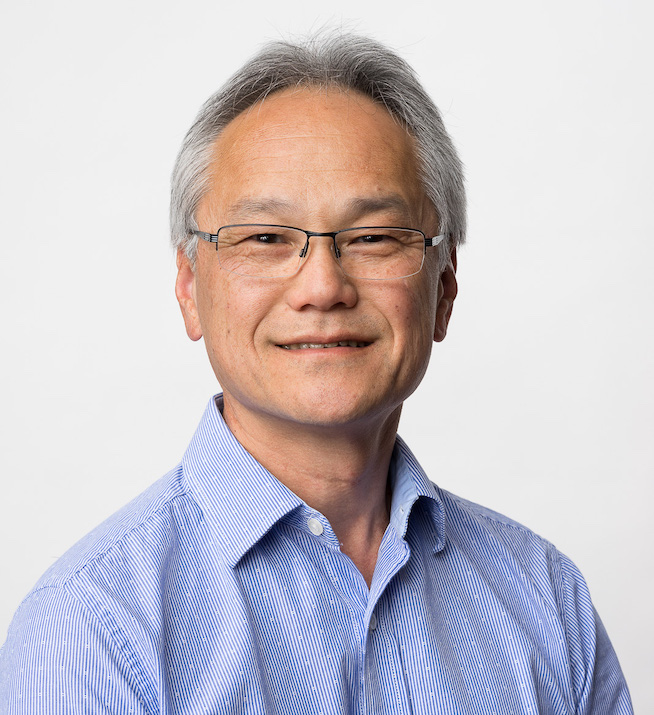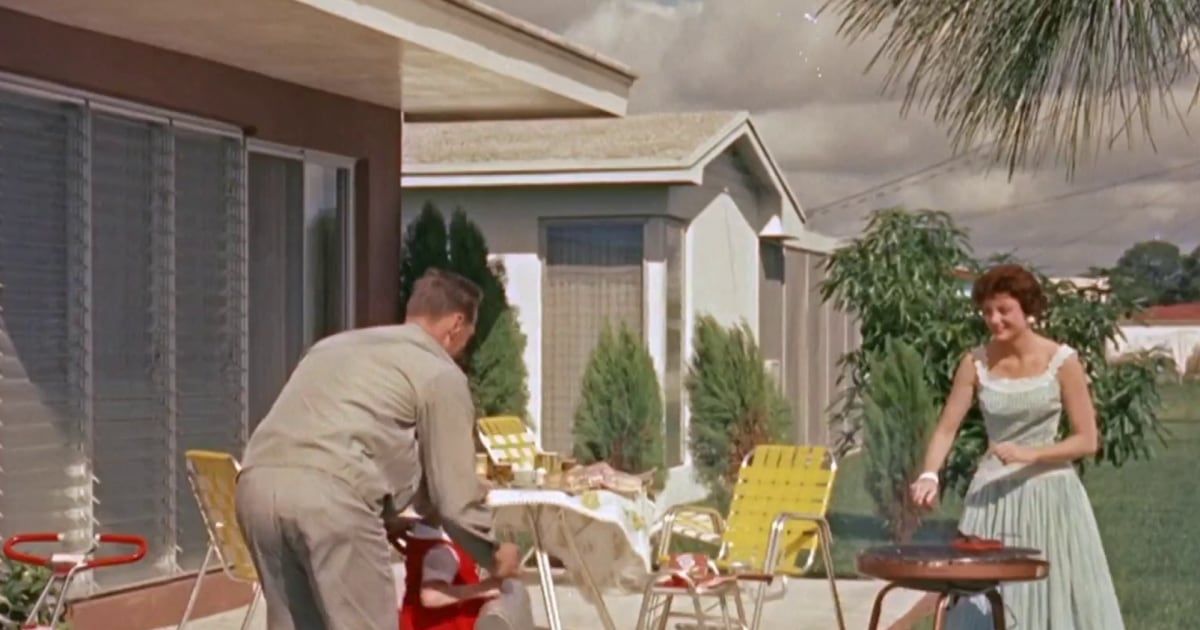Sports
Tech Focus: Training, Part 1 — As Broadcast Sports’ A1 Cohort Ages Out, Audio Looks for Solutions

Few intermediate steps are available, but mid-career changers might offer a fix
September may be back-to-school time, but higher education may not offer the panacea to offset the looming shortage of A1s for broadcast sports. The current cadre of veteran mixers are retiring, and the flow of new technical talent to replace them is only a trickle.
Vince Lepore, director, global training, Audinate, which created Dante AoIP, and former course director at technical academy Full Sail University for 18 years, says the A1 crunch has been in the making for as long as he has been an educator. “It’s not that people didn’t see it coming years ago; rather, no one took action swiftly enough.”
Audinate Vince Lepore: “The solution is going to be multipart. Automation will certainly be a part of it, as likely will AI, but we’re not going to see the Olympics being mixed by AI in our lifetimes.”
He worked with other educators and with product manufacturers and broadcasters to encourage broadcast-audio mixing as a career path for students at the school, scheduling visits by working A1s to provide a realistic picture of the profession. But it’s not enough, he says, to snare the attention of most college-age youth.
“It helps,” he explains, “but the solution is going to be multipart,” including more effort by broadcasters themselves to make the position less arduous, in terms of travel and technical responsibilities. “Automation will certainly be a part of it, as likely will AI, and workflows like [REMI] also help. But we’re not going to see the Olympics being mixed by AI in our lifetimes. We need to solve the personnel problem in the meantime.”
A Gap Year, or Three
Tom Sahara, SVP, Quintar, which creates interactive spatial-XR experiences for verticals, including sports, and former VP, operations and technology, Turner Sports, has become a kind of evangelist for replenishing the ranks of broadcast A1s. The Sports Broadcasting Hall of Famer has conducted seminars on how schools can help meet the challenge. For instance, his presentations at Full Sail University focus on explaining the various technical roles — audio and such functions as replay editing and graphics — involved in sports productions.

Quintar’s Tom Sahara: “It’s that next three years [after formal education], when they’re learning it in the real world, that’s missing. [Broadcasters] don’t necessarily want to or can’t provide apprenticeship opportunities. That gap is the big problem.”
He has found that college curricula have improved at teaching at least the rudiments of broadcast audio. “Schools have done a really good job of modernizing those courses,” he says, and of leveraging new cost-effective technology. “That lets those same schools do more of their own broadcast production for their own sports teams and leagues, which creates more opportunities for students to do hands-on learning.”
The speed bump in getting those better-prepared students into A1 seats, however, remains the same, he says: a reluctance on the part of broadcasters to hire them out of school, regardless of how much football they may have mixed there. There are very few accessible intermediary roles in which they can showcase their capabilities to national and regional broadcasters, who are understandably cautious about who gets to do the live mix of a game watched by potentially millions of viewers.
“They can learn a lot in the two to four years they spend at [higher education],” Sahara says, “but it’s that next three years, when they’re learning it in the real world, that’s missing. The schools can’t teach that, and the [broadcasters] don’t necessarily want to or can’t provide apprenticeship opportunities. That gap is the big problem.”
Middle Age, Big Opportunity?
There may be another gap worth exploring. A familiar narrative is that broadcast A1s begin their career in music engineering and production in their 20s and extend it for a decade or so; however, a relentless focus on youth affects the music business’s technical side, and music-engineering career arcs often falter as middle age approaches. It’s a point at which some current A1s successfully moved to broadcast in search of more financial security and career longevity.
Recently retired A1 Phil Adler, who mixed NFL and other sports for CBS for more than 30 years, says he transitioned from music to broadcasting in his mid thirties. “It was tough making a full-time living as [a music] engineer in Boston unless you owned a studio. A TV station with a truck offered me a job because they needed ‘an audio guy’ and taught me television sports.” He adds that his wife’s reluctance to move to the Los Angeles music scene sealed the decision to trade music for broadcast.
Chris Davie, managing partner, Sonority Group, an education-marketing and consulting firm in Franklin, TN, and a former VP, operations, at the School of Audio Engineering’s North America locations, points out that that’s an optimal point for schools and broadcasters to reach out to the cohort. “They are the career changers and the career advancers,” he says. “Moving [from music production] to broadcast audio could be the career change they need right then.”
It would make more sense, he agrees, than trying to persuade a 21-year-old college student seeking to start a career in music to look at broadcasting instead.
However, finding the music-production folks would be a challenge. That environment has largely moved from commercial facilities to private spaces, which limits the communal osmosis that has comprised a lot of professional audio’s learning and networking in the past century. The collegial postgraduate environment that music studios provided for a couple of generations of mixers is now an iPhone universe of countless YouTube tutorials that don’t place any particular value on teamwork, which is a vital quality for any broadcast production.
Tried-and-True Path
Dave Brickson, manager, field operations/A1, Program Productions, which provides crewing services and training for broadcast clients, contends that the traditional path to the A1 seat is still the only reliable one: from school to A2 to A1, a journey that can take several years. Over the years, he has found broadcast-A1 candidates who have already had careers mixing music. They can make excellent candidates, he says, because they already know how to balance and manage audio.
However, music production and broadcast sports remain very different domains. “We’ve had good luck with mixers coming from music in the television world,” he says. “They love what they do, and that’s good. But finding that person isn’t easy, and they still have to go through the process of learning to be an A2 before they can become an A1.”
At the same time, the complexity of audio technology has made the A1’s job difficult to learn and execute. Many A2s report that they don’t find the extra $200 or so a day worth the pressure that comes with mixing a show.

Program Productions’ Kelly Hammonds: “It can be a tough sell to ask an RSN client to create an opportunity to do training on their show.”
Further compounding the situation is the fact that broadcasters’ expectations for the A1s they hire remain high even as that job becomes more complicated and demanding. Kelly Hammonds, director, people operations, Program Productions, says “buy-in” from the client is necessary to support the kind of on-the-job, hands-on training that she and Brickson acknowledge is absolutely necessary to meet those expectations. “It can be a tough sell to ask an RSN client to create an opportunity to do training on their show,” she says. “You’re asking them to let you have the opportunity to make a mistake.”
Stakes Are High; So Is the Bar
The Conservatory of Recording Arts & Sciences (CRAS), in the Phoenix area, has invested heavily in adding broadcast-audio training to its curriculum, including acquisition of a 42-ft. remote-production trailer. It has been rolled out to MLB Diamondback games and regional NASCAR races and paired with Fox Sports’ and other networks’ own remote facilities to provide hands-on experience for its students. All CRAS students take some broadcast-audio courses during the 11-month program, which like its peer programs around the country is weighted toward music production.

CRAS’s Rachel Ludeman: “Some graduates who have gotten experience in some sports who have successfully made the transition to sports. But the bar is still really high. There has to be some middle ground here.”
That has had some success in getting graduates interested in careers in broadcast-sports sound, including two who mixed the recent Olympics for NBC Sports from Paris and Stamford, CT. However, says CRAS Employment Coordinator Rachel Ludeman, relatively few grads opt for broadcast. Besides music’s siren call, she opines, the 21- to 26-year-old males who make up the vast majority of CRAS students don’t yet have the work ethic required by broadcasters and the often-grueling pace of a major-league sports A1. She has also witnessed first-hand the reluctance of broadcasters to offer a break to a new face, regardless of their education and experience. The stakes at the network level, she acknowledges, are just too high to take those chances.
Is Automation the Future?
Ultimately, some amount of automation of the A1 function may be necessary, if only because the major broadcasters are shedding personnel at a brisk pace, which also serves to reduce the attractiveness of jobs for those seeking longer-term security. On Aug. 13, CBS parent Paramount announced job cuts that will reduce staff by about 15%. Warner Bros. Discovery, the parent of TNT Sports and other media properties, has slashed its staff in recent years, affecting nearly 1,000 employees, as it pays down billions in debt. ESPN owner Disney laid off more than 100 employees in its TV division in July.
Technology-based alternatives are on the horizon. UK-based Salsa Sound’s AI-based MIXaiR service automatically creates mixes from microphone feeds around a stadium or arena, with “no additional tracking or manual operation needed.” But no one expects the imminent arrival of an automated alternative.
In the meantime, ad hoc solutions will try to keep A1 seats filled. Program Productions’ Ludeman has her “little black book” of grads and others who have worked their way up the broadcast ladder to some extent and regularly recommends them for fill-in spots that can lead to more-regular employment at the network level.
“There are some graduates who have gotten experience in some sports or in live-sound mixing or even corporate-event production who have successfully made the transition to sports,” she says. “But the bar is still really high: I recently saw [a listing] from the NFL for an audio mixer that required five years’ experience and a four-year degree. That’s just to be on-call. There has to be some middle ground here.”









